You’re thinking about purchasing a reverse osmosis drinking water system for your family and you never knew that there were so many different ones to choose from.
You have been looking into a few systems that are very popular and have great reviews. Each one uses the same amount of filters and shows the filters that are designed to be used for them. The filters all look pretty much the same, are reverse osmosis filters universal?
Filters for various reverse osmosis drinking water systems differ in length, diameter, type of connection, and type of filtering. Although most reverse osmosis systems have filters for sediment, carbon filters for chemicals, the filters are not necessarily interchangeable.
Some reverse osmosis drinking water systems have easy to find and relatively inexpensive filters and membranes, but some systems, not so much!
How reverse osmosis filters differ and why are they are NOT universal?
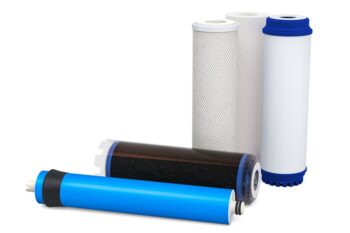
Before purchasing a new reverse osmosis drinking water system, you should consider the cost and availability of the filters and membranes that you will need for years to come to maintain your system.
A reverse osmosis drinking water system may use several different types of filters. It will depend on what is needed to be filtered out from the incoming water supply.
Although many reverse osmosis sediment filters may look very much the same, they simply may not fit inside of your reverse osmosis system.
Some reverse osmosis sediment filters have openings that go straight through the middle of them. Others may have connections with Orings on one end where they attach to the reverse osmosis system.
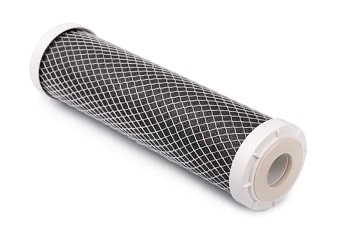
Sometimes reverse osmosis sediment filters are completely encased within a housing that gets screwed onto the system itself. Others may have tabs that protrude out from the top that locks into place when given a quarter turn.
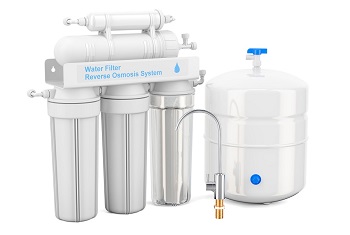
In some cases, you need to remove pins or clamps to take off or put on filters of reverse osmosis drinking water systems. But most of the more popular reverse osmosis systems use filter housings that easily spin-off and back on.
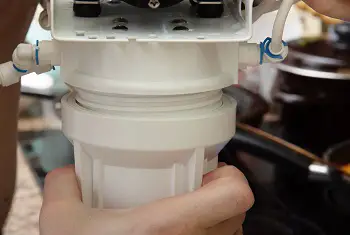
Where you get your water from may dictate if you can use “Universal” reverse osmosis filters.
Water from a well may have high levels of sediment and particles in it which need to be removed with a sediment filter.
Municipal water will generally have chlorine in it to disinfect your water which would require a carbon pre-filter.
A carbon pre-filter on your reverse osmosis system will remove the chlorine and help with the overall taste of your water.
Although many so-called “Universal” sets of reverse osmosis filters may fit into your reverse osmosis system, if they are not doing what you need them to do, they may not be making your drinking water better at all!
Chlorine is widely used as an economical and effective water disinfectant for municipal water supplies.
But even though drinking a low level of chlorine may not be very harmful to us, chlorine can permanently damage the semi-permeable membrane of a reverse osmosis system.
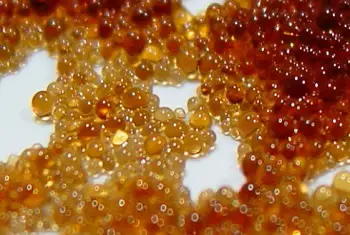
Can Water Softener Resin Go Bad?
Although the intent of using chlorine to make the water safer to drink, if the water softening resin inside your water softener is exposed to chlorine, …Continue reading
If the membrane of your reverse osmosis system is not protected from chlorine in your municipal water by a carbon pre-filter, the openings in the membrane can expand making the membrane ineffective at removing dissolved solids from your water. (source)
Although there are many types and sizes of carbon pre-filters for reverse osmosis systems, some are only to improve the taste and odor of your water, and may not be effective for chlorine removal.
Do more “Stages” on a reverse osmosis system make it less likely that you can use universal filters?
Reverse osmosis drinking water companies are coming out with more and more stages to their systems all the time. Re-mineralization stages, ultraviolet light purification stages, and many more.
Although many of these extra stages are individual housings that are connected together with quick connect fittings, you could in theory add or remove any of these stages from a system and use any universal stage housing that will connect to the same size tubing that your reverse osmosis system uses.
Any time that you introduce ANY filter or stage to your reverse osmosis system, you may be changing the water pressure going through the system, and therefore changing how well it is filtering your water.
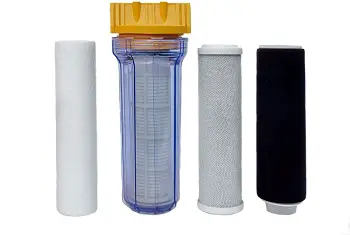
What Are The Stages Of Reverse Osmosis?
The basic stages of a reverse osmosis system are sediment pre-filtering, a carbon filter for chlorine removal, removal of dissolved solids through a reverse osmosis membrane, … Continue reading
Replacement filters for most reverse osmosis systems come as a set, and this is for a good reason.
Any given 50 gallons per day reverse osmosis system requires a certain amount of water pressure for it to produce 50 gallons of properly filtered water per day.
If you were to add additional filters before or after the reverse osmosis membrane, it could affect the water pressure enough for the membrane to not be able to produce quality water.
While some universal reverse osmosis filters may work fine for the basic stages of a reverse osmosis system, if your system has additional stages other than the standard pre-sediment filter, pre-carbon filter, membrane, post-carbon, and polishing carbon, I recommend getting the complete reverse osmosis filter set designed to be used for your system.
Highly recommended reverse osmosis systems that can use universal filters.
| Model | WHER25 | RCC7AK | RCC7P-AK | RCC1UP-AK |
|---|---|---|---|---|
| Brand | Whirlpool | iSpring | iSpring | iSpring |
| Average Cost | $165 – $185 | $239 – $269 | $279 – $299 | $469 – $499 |
| My Review | See My Review | See My Review | See My Review | See My Review |
| Stages | 3 | 6 | 6 | 7 |
| Installed | Under Sink | Under Sink | Under Sink | Under Sink |
| Overall Value | 4.5 out of 5 | 4.5 out of 5 | 4.5 out of 5 | 4.5 out of 5 |
| Booster Pump | No | No | Yes | Yes |
| Mineralization/ Alkalization Stage | No | Yes | Yes | Yes |
| Ultraviolet Protection Stage | No | No | No | Yes |
| Available on | Amazon | Amazon | Amazon | Amazon |
Most reverse osmosis systems use a sediment filter, but they are not all the same.
Many sediment filter cartridges look very similar and many of them may even fit in your reverse osmosis system, but that doesn’t mean that they all do the same thing.
A so-called “Universal” reverse osmosis sediment filter may not be able to filter out very fine particles which could make their way through your reverse osmosis system.
These particles can get lodged in your system’s membrane causing poor pressure and low-quality drinking water.
Water sediment filters may look like a solid piece of foam, a string wound around over and over again, a pleated fabric like an accordion or the entire filter cartridge could be enclosed in a housing container.
Would you know which one is which just by looking at them?
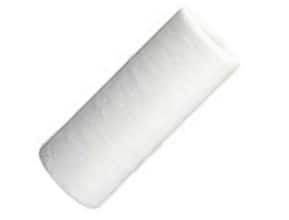
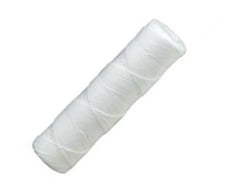
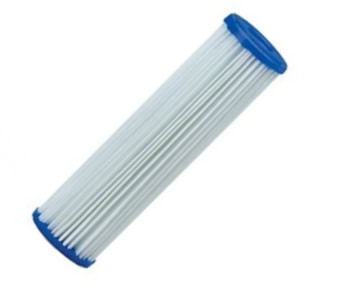
A foam-looking sediment filter may filter a particle as small as 1 micron.
But a similar-looking foam sediment filter may only filter particles that are as large as 50 microns.
A 50 micron-sized particle is far larger of a particle than what you should allow getting into your reverse osmosis system.
A reverse osmosis carbon filter can be very different from one system to another.
Not only are different reverse osmosis carbon filters not universal in how they attach to a reverse osmosis system, but the type and amount of carbon used in one carbon filter are not necessarily the same as another carbon filter.
Just because a reverse osmosis carbon filter says CARBON on the label, does not mean that it has the same type or amount of carbon in it as the carbon filter that you should be using for your reverse osmosis system.
Especially if your water is supplied by a municipal water supply, your water has most likely been treated with chlorine to make it safe to drink.
While disinfecting your water with chlorine is a good thing for you, it is a very bad thing for your reverse osmosis membrane.
Using the wrong carbon pre-filter on your reverse osmosis drinking water system could allow chlorine from municipal water to get to your system’s membrane and permanently damage it.
Chlorine can eat away at the openings of a reverse osmosis membrane so it will no longer be able to filter out the dissolved solids that it is designed to remove from your water.
This is why I never recommend using a so-called “Universal” carbon pre-filter for any reverse osmosis drinking water system unless the manufacturer has approved it for use with their system.
Most reverse osmosis systems use a membrane designed just for that system.
Using a universal pre-filter or post-filter that is compatible with your reverse osmosis system is fine if it will work correctly for your system, but a reverse osmosis membrane is a different matter.
Reverse osmosis membranes are deliberately designed differently from one reverse osmosis system to another to produce the best quality water for that system.
A high volume 75 gallons per day reverse osmosis drinking water system will use a different type of reverse osmosis membrane than a lower volume system that is only designed to produce 50 gallons of reverse osmosis water per day.
A higher volume, 75 gallons per day reverse osmosis membrane will tend to have a lower rejection rate which means that it will reject less of the impurities from your water and allow more impurities to pass through the membrane and into the water that you will be drinking.
Having a reverse osmosis drinking water system that can produce 75 gallons of reverse osmosis water per day may sound like a great idea.
But higher volume reverse osmosis membranes tend to wear out quicker, and the average household will generally not use 75 gallons of reverse osmosis water on any given day.
A lower volume, 50 gallons per day reverse osmosis membrane will tend to have a higher rejection rate which means that it will reject more of the impurities from your water and allow fewer impurities to pass through the membrane and into the water that you will be drinking.
Can I use a universal 75 gallon per day membrane in my 50 gallons per day RO?
Most families will find that a 50 gallon per day reverse osmosis system will provide more than enough water for their family because the reverse osmosis system stores up to 2 1/2 gallons of filtered water in its storage tank that is ready to use at any time.
Also, a reverse osmosis drinking water system will begin to produce additional filtered water after only a small amount of stored water has been used so the storage tank is continually being replenished.
A universal 75 gallons per day reverse osmosis membrane may fit into your reverse osmosis system, but it may not be producing the same quality water that it would be with the reverse osmosis membrane that it was originally designed to use.
Don’t all In-line reverse osmosis post-filters work the same?
Most reverse osmosis drinking water systems will include an in-line post filter with their system and in most cases, it is simply a carbon filter that is used to “Polish” the water just before it goes to your drinking water faucet.
These in-line carbon filters are not as universal as they may look!
They come in 2 basic connection sizes, different lengths, different widths, (one type is just a little longer and thinner than the other), and even with different types of carbon in them which makes them not very universal at all.
If you are considering using a universal in-line “Polishing” filter for your reverse osmosis system, be sure that it contains the same carbon that your existing filter uses and that it has the correct connections on each end of it.
Most in-line carbon post-filters will have a 1/4 or 3/8 inch quick connect connection which only requires you to push the tubing into the filter, hold back the retention ring, and then pull out the tubing.
Then you simply have to make sure the end of the tubing is free of burs and push the tubing into the new filter.
These in-line carbon filters are directional! Look for an arrow on the outside of the filter and make sure it points in the direction of the water flow.
Can you adapt a universal filter to use it in a non-universal reverse osmosis system?
A reverse osmosis filter that is a little too long can sometimes be cut down to fit in a reverse osmosis system that normally uses a slightly shorter filter.
Or it could even be forced into the system to make it fit, but when you are trying to fit a round peg into a square hole there will always be a problem.
There are no adapter pieces that I am aware of to adapt one reverse osmosis filter to fit where another one is designed to fit.
Orings and seals may look like they are similar enough from one reverse osmosis filter to another. But if the filter does not seal correctly, you could be drinking water that is not as pure as you may think it is.
Worse yet, a loose-fitting Oring or seal could mean coming home to a flooded kitchen because the “Universal” reverse osmosis filter didn’t fit quite well enough.
Why aren’t reverse osmosis filters universal?
There are many reverse osmosis drinking water systems that will be able to use universal filters.
Many reverse osmosis systems use the same size and type of filter housings that are used on many other reverse osmosis systems, just with a different name on the sticker.
These standard-type reverse osmosis systems will generally use the same filters.
But there are several reverse osmosis systems that have been made to only use the specific filters that are sold by the manufacturer of the system.
Many of the more expensive reverse osmosis drinking water system brands design their reverse osmosis systems to only be able to use their specific filters.
Can I use universal reverse osmosis filters for my Kinetico reverse osmosis system?
Kinetico makes very unique reverse osmosis drinking water systems that certainly have their benefits. But being able to use anything but their reverse osmosis filters is not one of them.
Not only does Kinetico make their reverse osmosis systems so that you can only use their filters in them, but they also make sure that you can only get Kinetico reverse osmosis filters from one of their authorized dealers.
Prices from Kinetico dealers are not regulated by Kinetico so Kinetico dealers can charge as much as they want for Kinetico filters.
I have found that a pre-sediment and post-carbon filter set from a Kinetico dealer can be anywhere from about $100.00 to as much as $225.00 for the exact same filters depending on which dealer that you buy them from.
Although Kinetico reverse osmosis filters contain basically the same material as universal reverse osmosis filters, Kinetico has made their reverse osmosis system so that only their filters will work with their system.
Can I use universal reverse osmosis filters for my Culligan reverse osmosis system?
Culligan reverse osmosis filters, like all of their other water treatment parts, are very specific to Culligan.
They make sure that all of the components for their water treatment systems can only use Culligan-made replacement parts.
This includes their reverse osmosis system filters.
Even though some universal reverse osmosis filters and membranes look very similar to Culligan filters and membranes, Culligan filters and membranes are made slightly different.
This is to ensure that Culligan dealers will continue to generate revenue even after the initial sale has been made and for many years to come.
Can I use universal reverse osmosis filters for my Water-Right reverse osmosis system?
Water-right makes a few different reverse osmosis systems at different price ranges and sizes.
Their Eclipse and Impression reverse osmosis systems both use replacement filters that are specific to Water-right.
However, some of Water-rights older Evolve reverse osmosis systems use standard-sized reverse osmosis filters and membrane so a standard universal set of a 10-inch sediment prefilter, 10-inch carbon post-filter, and inline carbon polishing filter will fit in their system.
By making their reverse osmosis systems exclusively use their filters, the manufacturer can ensure that their dealers and the main company will continue to profit from the sale of their system long after the initial sale and that the system will work as it was designed to.
To Sum Up!
Just like parts for cars are often not universal, filters for reverse osmosis drinking water systems are not always universal.
If you have a standard type reverse osmosis system that has canisters that screw of and back on, you may be able to use universal reverse osmosis filters but check with your system’s owner’s manual to make sure that they are compatible.
If your reverse osmosis system uses very specific reverse osmosis filters that are specifically designed for use with your reverse osmosis drinking water system, you are at the mercy of the manufacturer to supply you with replacement filters for your system.

